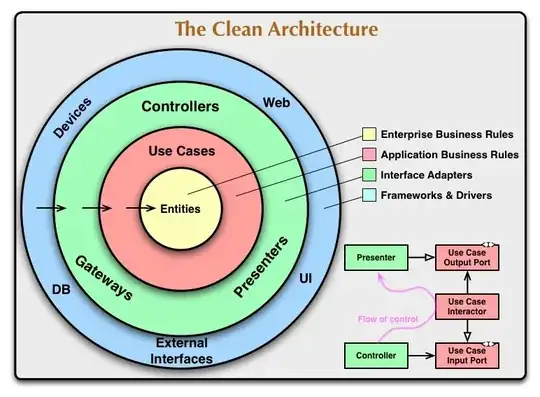I was recently tasked with creating a factory that processes webhook events. Any authorized application in the solution (1 app per domain) can post any meaningful payload and as long as the event's wired up for processing it should be able to handle it.
I have two domain projects: Core (logging, security, & common functionality) and let's call it App1. Ideally, App1 should always reference Core, but Core should never reference App1 for scalability purposes (many things can reference Core).
The factory has the potential to call App1, App2, App3, etc... thereby my question is how are these one-offs typically handled in a domain driven design architecture?
